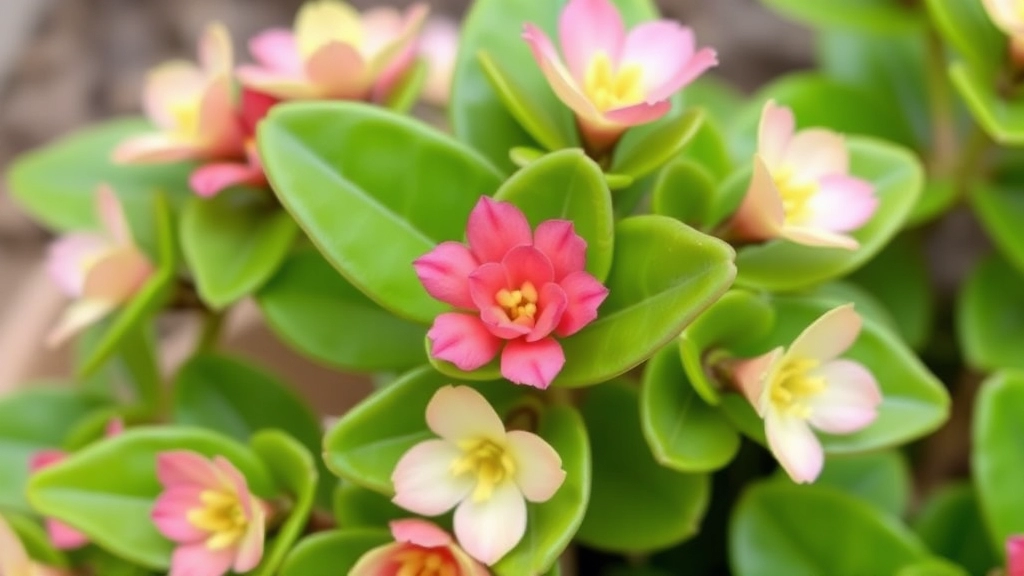Kalanchoe Brasiliensis: Medicinal Uses
When it comes to the medicinal uses of Kalanchoe brasiliensis, this plant has a rich history in traditional medicine. Known for its potent bioactive compounds, it has been used to treat a variety of ailments, from inflammation to infections. In this article, we’ll dive into the traditional uses, scientific research, and practical applications of Kalanchoe brasiliensis in modern medicine.
Benefits of Kalanchoe Brasiliensis
One of the standout benefits of Kalanchoe brasiliensis is its antioxidant properties, which help combat oxidative stress and promote overall health. Additionally, its anti-inflammatory effects make it a valuable remedy for conditions like arthritis and other inflammatory diseases. We’ll also explore its role in gastrointestinal health, particularly its effectiveness in treating peptic ulcers, and its potential in wound healing and skin care.
Traditional Uses of Kalanchoe Brasiliensis in Ethnomedicine
Have you ever wondered how traditional remedies can shape modern health practices?
Kalanchoe brasiliensis, a succulent plant native to Madagascar, has a rich history in ethnomedicine.
For centuries, various cultures have harnessed its healing properties.
Historical Context
- Indigenous Practices: Indigenous communities in regions like Brazil and Africa have used Kalanchoe brasiliensis for its therapeutic benefits.
- Cultural Significance: Often regarded as a “wonder plant,” it is celebrated for its versatility in treating a range of ailments.
Common Applications
- Respiratory Issues: Traditionally, it has been employed to alleviate coughs and other respiratory ailments.
- Skin Conditions: Many cultures have used it topically for skin irritations and wounds.
- Digestive Health: Some communities have relied on it for digestive issues, including peptic ulcers.
Anecdotal Evidence
Stories abound of individuals finding relief from chronic conditions through the use of Kalanchoe brasiliensis.
For more information on the benefits of this plant, you can explore the top health and medicinal uses of Kalanchoe Delagoensis. Additionally, if you are interested in growing this plant, check out our comprehensive guide on caring for Kalanchoe Brasiliensis.
Key Bioactive Compounds in Kalanchoe Brasiliensis
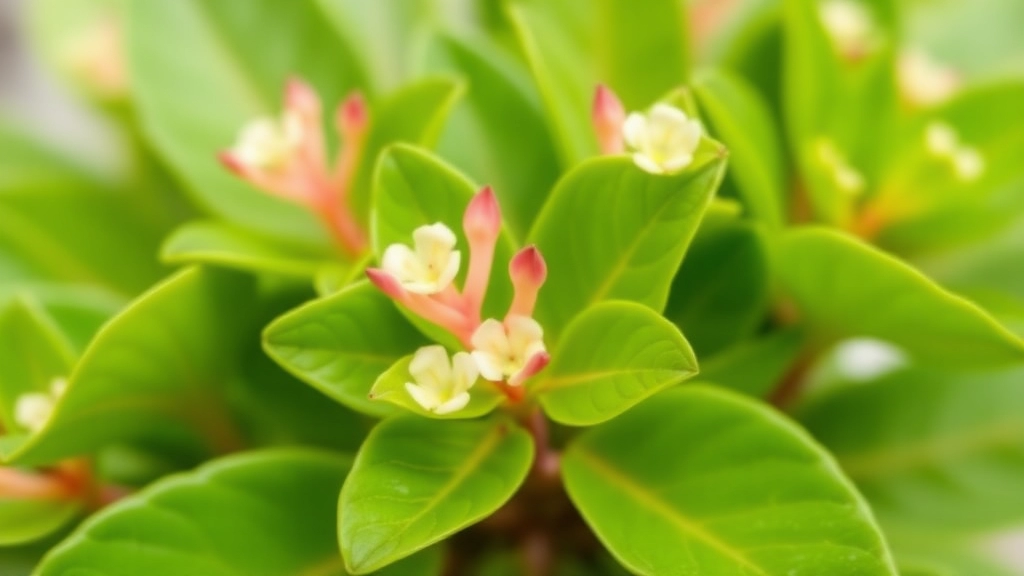
You might be wondering, what makes Kalanchoe Brasiliensis so special?
This plant is packed with bioactive compounds that are the real stars of the show.
What Are Bioactive Compounds?
Bioactive compounds are natural substances that have a positive effect on our health.
In Kalanchoe Brasiliensis, several key players stand out:
- Flavonoids: These are known for their antioxidant properties. They help protect our cells from damage.
- Saponins: These compounds have anti-inflammatory effects and can boost our immune system.
- Triterpenes: Often associated with wound healing, triterpenes can help repair skin and promote overall skin health.
- Phenolic Acids: These are great for gut health and can aid in digestion.
Why Should You Care?
Understanding these compounds is crucial because they contribute to the medicinal benefits of Kalanchoe Brasiliensis.
- Antioxidants: Help combat oxidative stress.
- Anti-inflammatory: Reduce inflammation, which is linked to many chronic diseases.
- Immune Support: Strengthen your body’s defenses against infections.
These compounds work together, making Kalanchoe Brasiliensis a powerhouse in natural medicine.
Antioxidant Properties and Their Benefits
As we delve deeper into the remarkable attributes of Kalanchoe Brasiliensis, it’s essential to highlight its potent antioxidant properties. Many of us grapple with the effects of oxidative stress, which can lead to various health issues, including chronic diseases and premature aging.
What Are Antioxidants?
Antioxidants are compounds that neutralize free radicalsâunstable molecules that can damage cells. This damage is linked to numerous health problems, making antioxidants crucial for maintaining overall well-being.
Benefits of Antioxidants in Kalanchoe Brasiliensis:
- Cell Protection: The antioxidants in Kalanchoe Brasiliensis help protect our cells from oxidative damage.
- Chronic Disease Prevention: Regular consumption may lower the risk of chronic diseases such as heart disease and diabetes.
- Anti-Aging Effects: By combating oxidative stress, these compounds can contribute to healthier skin and a more youthful appearance.
- Enhanced Immune Function: Antioxidants support the immune system, helping the body fend off illnesses.
For instance, a study revealed that extracts from Kalanchoe Brasiliensis exhibited significant antioxidant activity, suggesting its potential role in protecting against oxidative stress-related conditions.
Incorporating Kalanchoe Brasiliensis into your routine can be as simple as using it in teas or supplements. However, it’s vital to understand the appropriate forms and dosages to maximize benefits. For more detailed information on the health benefits and uses of Kalanchoe species, you can explore the health benefits and uses of Kalanchoe Pinnata. Additionally, to ensure you’re using the right forms and dosages, check out this guide on the health and medicinal uses of Kalanchoe Delagoensis.
Anti-inflammatory Effects of Kalanchoe Brasiliensis
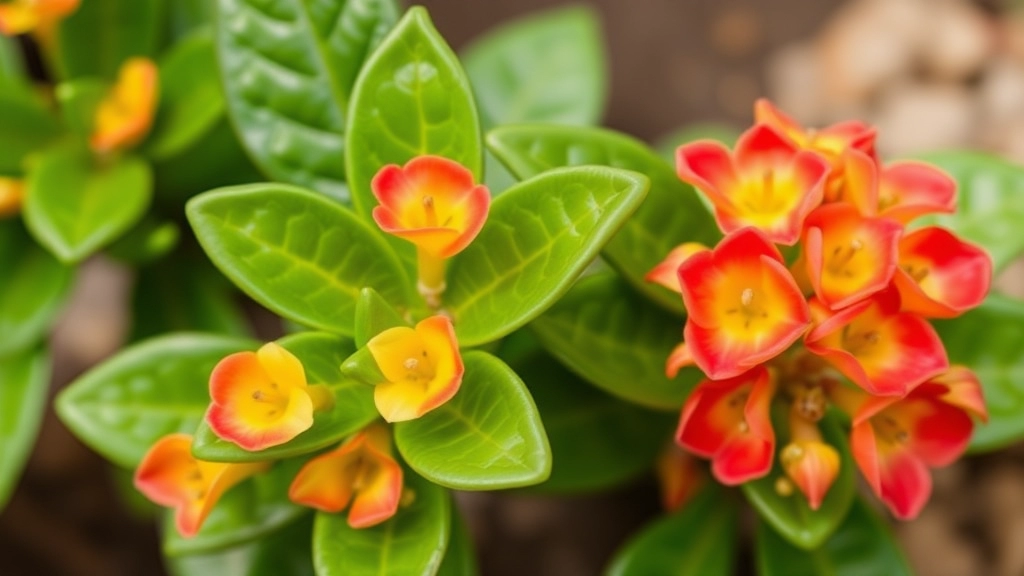
When considering the myriad of health benefits offered by Kalanchoe Brasiliensis, its anti-inflammatory properties stand out as particularly significant.
Many people suffer from chronic inflammation, which can lead to a range of health issues, including arthritis, heart disease, and even certain cancers.
Kalanchoe Brasiliensis has been traditionally used to combat inflammation, and modern research supports these claims.
Key Anti-inflammatory Mechanisms
- Flavonoids: These compounds help reduce inflammation by inhibiting pro-inflammatory enzymes.
- Triterpenes: Known for their ability to modulate inflammatory pathways, triterpenes contribute to the plant’s therapeutic effects.
- Saponins: These bioactive compounds can also play a role in reducing inflammation and promoting overall health.
Real-World Applications
Imagine someone struggling with joint pain due to inflammation.
Incorporating Kalanchoe Brasiliensis into their diet could provide a natural alternative to conventional anti-inflammatory medications.
Many individuals have reported significant improvements in their symptoms after using this plant.
How to Use Kalanchoe Brasiliensis
- Tea: Brew the leaves to create a soothing tea.
- Extracts: Available in supplement form, these can be easily integrated into daily routines.
- Topical Applications: Creams or ointments made from the plant can be applied directly to inflamed areas.
By harnessing the anti-inflammatory effects of Kalanchoe Brasiliensis, individuals can take proactive steps towards better health.
Many individuals struggle with gastrointestinal issues, particularly peptic ulcers, which can cause significant discomfort and disrupt daily life.
Kalanchoe brasiliensis has emerged as a promising natural remedy for these ailments, offering potential relief and healing properties.
Understanding Peptic Ulcers
Peptic ulcers are sores that develop on the lining of the stomach, small intestine, or esophagus. Common symptoms include:
– Abdominal pain
– Bloating
– Nausea
– Indigestion
If left untreated, they can lead to more severe complications, making effective treatment essential.
How Kalanchoe Brasiliensis Helps
Research suggests that Kalanchoe brasiliensis may aid in the treatment of peptic ulcers through several mechanisms:
– **Mucosal Protection:** The plant contains compounds that may help strengthen the mucosal lining, providing a barrier against stomach acids.
– **Promoting Healing:** Its bioactive components are thought to accelerate the healing process of existing ulcers.
– **Reducing Acid Secretion:** Some studies indicate that Kalanchoe brasiliensis may help regulate gastric acid production, alleviating symptoms.
Practical Applications
Incorporating Kalanchoe brasiliensis into your routine can be straightforward. Here are some practical tips:
– **Tea Infusion:** Steep fresh or dried leaves in hot water for a soothing drink.
– **Topical Application:** Use a poultice made from the leaves for localized relief.
– **Supplements:** Consider capsules or extracts, ensuring they are from reputable sources.
For those interested in learning more about the diverse uses of Kalanchoe, the [Kalanchoe Pinnata Benefits and Uses in Tamil Nadu](https://planthq.org/kalanchoe-pinnata-benefits-and-uses-in-tamil-nadu/) provides valuable insights. Additionally, if you’re curious about the different varieties and their care requirements, the [Ultimate Guide to Growing and Caring for Succulent Plant Kalanchoe](https://planthq.org/ultimate-guide-to-growing-and-caring-for-succulent-plant-kalanchoe/) is a comprehensive resource.
Wound Healing and Skin Health Applications

Have you ever wondered how some plants can work wonders for your skin?
Kalanchoe Brasiliensis is one of those gems that has been cherished for its wound healing properties.
This plant isn’t just a pretty face; it’s packed with potential for skin health.
Why Kalanchoe Brasiliensis?
- Natural Remedies: Traditionally, people have used Kalanchoe Brasiliensis to treat cuts, burns, and other skin issues.
- Promotes Healing: Its leaves are often applied directly to wounds, helping to speed up the healing process.
How Does It Work?
The secret lies in its bioactive compounds, which can help your skin in several ways:
- Cell Regeneration: It encourages the growth of new cells, which is essential for healing.
- Moisturising Effect: The sap from the leaves provides hydration, keeping the area moist and preventing scabs.
- Anti-inflammatory Action: This helps reduce swelling and redness, making it ideal for irritated skin.
Real-Life Examples
Imagine you’ve just scraped your knee while out on a hike.
Instead of reaching for a chemical-laden ointment, you could use Kalanchoe Brasiliensis.
Just crush a leaf, apply it to the wound, and let nature do its magic.
Many folks swear by this method, claiming faster healing and less pain.
Additional Benefits for Skin Health
Beyond wound healing, Kalanchoe Brasiliensis has a few more tricks up its sleeve:
- Acne Treatment: Its antibacterial properties can help reduce breakouts.
- Skin Soothing: If you have irritated or sunburned skin, a poultice of Kalanchoe can provide relief.
- Anti-ageing: Some believe it helps in reducing fine lines, keeping your skin looking youthful.
So, whether you’re dealing with a pesky cut or aiming for radiant skin, Kalanchoe Brasiliensis is definitely worth considering.
Antimicrobial Potential Against Pathogens
As we explore the diverse benefits of Kalanchoe brasiliensis, it’s crucial to highlight its promising antimicrobial potential against various pathogens. Many individuals seek natural remedies for infections, often wondering if plants can offer effective solutions.
Kalanchoe brasiliensis has garnered attention for its ability to combat harmful microorganisms, making it a valuable addition to traditional medicine cabinets. Here are some key points regarding its antimicrobial properties:
Kalanchoe Brasiliensis in Treating Respiratory Ailments
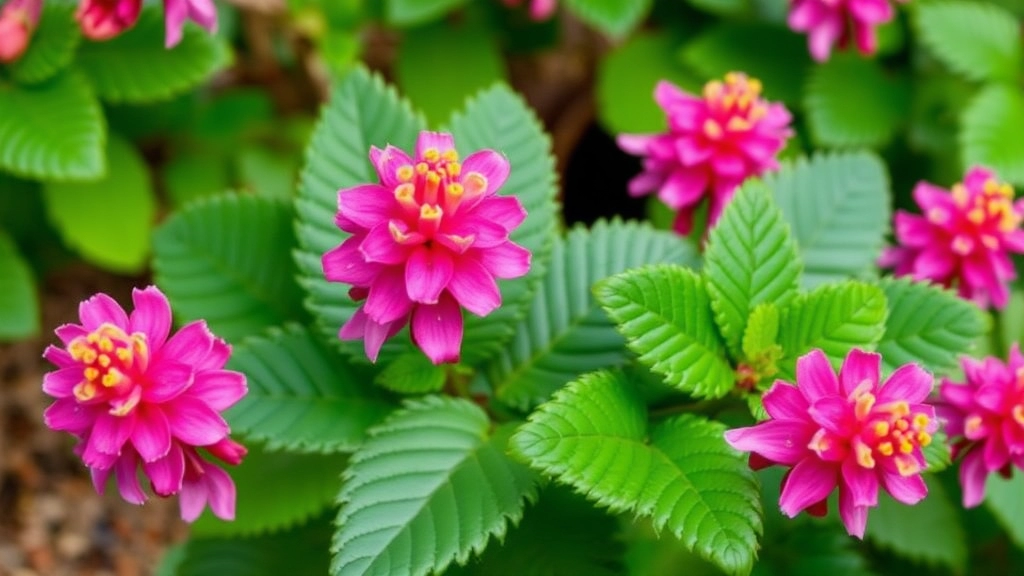
Ever found yourself struggling with a pesky cough or a stuffy nose? You’re not alone. Many of us are on the lookout for natural remedies to ease respiratory issues. Enter Kalanchoe Brasiliensis, a plant that’s been making waves in the world of ethnomedicine.
Natural Relief for Respiratory Issues
Kalanchoe Brasiliensis isn’t just a pretty plant; it’s packed with properties that can help tackle respiratory ailments. Here’s how it can make a difference:
- Expectorant Qualities: It can help clear mucus from your airways, making it easier to breathe.
- Soothing Effects: The anti-inflammatory properties can calm irritated airways, which is a blessing during those cold months.
- Immune Boosting: It supports your immune system, helping your body fight off respiratory infections.
Real Stories
Imagine sitting around the table with friends, sharing home remedies. One of them swears by Kalanchoe Brasiliensis tea for their seasonal allergies. They rave about how it helped clear their sinuses and made breathing a breeze. Sounds tempting, right?
How to Use It
If you’re keen to give it a try, here are some easy ways to incorporate Kalanchoe Brasiliensis into your routine:
- Tea: Brew the leaves for a soothing drink.
- Tinctures: These concentrated extracts can be taken in small doses.
- Topical Applications: If you’re feeling congested, applying the juice to your chest may help.
Impact on Immune System and Inflammation Regulation
As we explore the various medicinal benefits of Kalanchoe brasiliensis, it’s essential to consider its role in immune system support and inflammation regulation.
Many individuals struggle with chronic inflammation and weakened immune responses, leading to various health issues.
Kalanchoe brasiliensis may offer a natural solution to these concerns.
Immune System Support
- Enhances Immune Function: Kalanchoe brasiliensis is believed to stimulate the production of immune cells, helping the body fend off infections. For more on its health benefits, check out the Kalanchoe delagoensis benefits.
- Rich in Antioxidants: The plant contains bioactive compounds that combat oxidative stress, further bolstering immune health.
Inflammation Regulation
- Natural Anti-inflammatory Properties: The compounds found in Kalanchoe brasiliensis have shown promise in reducing inflammation markers in the body. Learn more about Kalanchoe pinnata’s side effects and safety precautions.
- Potential Relief for Autoimmune Conditions: By modulating the immune response, this plant may provide relief for those suffering from autoimmune disorders.
Safety, Dosage, and Potential Side Effects of Kalanchoe Brasiliensis
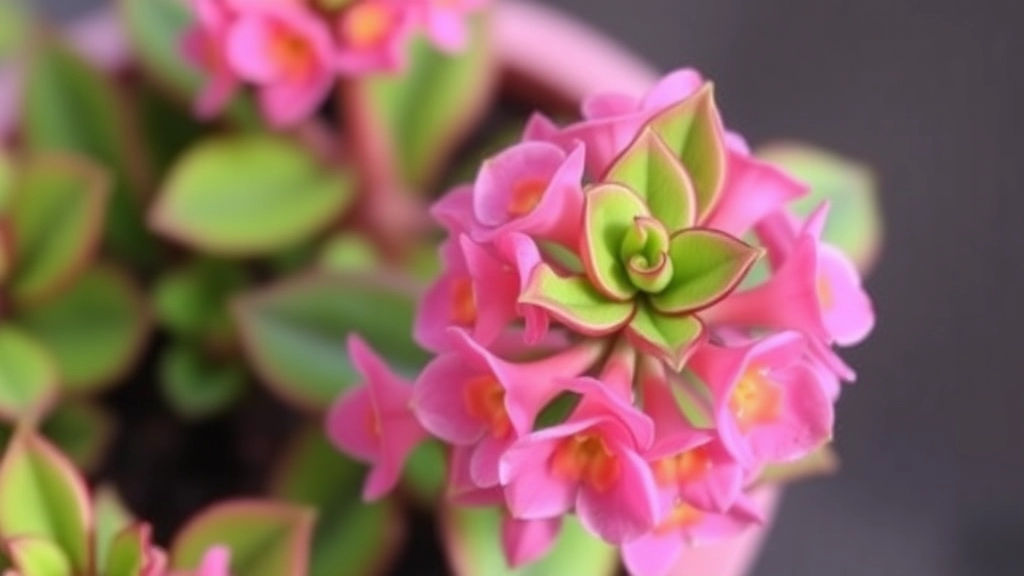
When exploring the medicinal benefits of Kalanchoe Brasiliensis, many of us wonder: Is it safe? How much should I take? And what about side effects? These are valid concerns, especially when considering herbal remedies.
Understanding Safety
First things first, Kalanchoe Brasiliensis is generally regarded as safe when used appropriately. However, like any herbal supplement, it’s essential to approach it with caution.
- Consult a Healthcare Professional: Always chat with your doctor before starting any new supplement, especially if you’re on medication or have existing health conditions.
- Pregnancy and Breastfeeding: If you’re pregnant or breastfeeding, it’s best to avoid Kalanchoe Brasiliensis unless advised otherwise by a healthcare provider.
Recommended Dosage
Dosage can vary based on individual needs and the form of Kalanchoe Brasiliensis you’re using. Here are some general guidelines:
- Tea or Infusion: 1-2 cups daily.
- Extracts: Follow product instructions, but typically around 500 mg to 1,000 mg per day.
Always start with a lower dose to see how your body reacts before increasing it.
Potential Side Effects
While Kalanchoe Brasiliensis is generally safe, some people might experience mild side effects, such as:
- Gastrointestinal Upset: Nausea or stomach discomfort.
- Allergic Reactions: Skin rashes or itching in rare cases.
- Interactions with Medications: It may interact with certain drugs, particularly those affecting blood pressure or blood sugar.
Listening to Your Body
It’s crucial to listen to your body. If you notice any adverse reactions, stop using it and consult a healthcare professional.
As we delve deeper into the medicinal potential of Kalanchoe brasiliensis, it’s essential to highlight the scientific studies that substantiate its traditional uses.
Numerous research efforts have focused on the bioactive compounds found in Kalanchoe brasiliensis, revealing a wealth of therapeutic benefits.
Key Findings from Scientific Research:
– **Antioxidant Activity:** Studies have demonstrated that extracts from Kalanchoe brasiliensis exhibit significant antioxidant properties. These compounds help neutralise free radicals, potentially reducing oxidative stress and the risk of chronic diseases.
– **Anti-inflammatory Effects:** Research indicates that Kalanchoe brasiliensis can modulate inflammatory responses. One study showed a reduction in inflammatory markers, suggesting its efficacy in managing conditions characterised by inflammation.
– **Gastrointestinal Health:** Clinical trials have explored the role of Kalanchoe brasiliensis in treating peptic ulcers. Results suggest that its extracts can promote healing and provide relief from ulcer-related symptoms.
– **Wound Healing:** Investigations into wound healing properties have shown that topical applications of Kalanchoe brasiliensis extracts can accelerate tissue regeneration and reduce healing time.
– **Antimicrobial Properties:** Several studies have highlighted the antimicrobial potential of Kalanchoe brasiliensis against a range of pathogens, including bacteria and fungi. This suggests its applicability in treating infections.
– **Respiratory Health:** Research has also pointed to benefits in respiratory ailments. Kalanchoe brasiliensis may help alleviate symptoms associated with respiratory infections, supporting traditional claims of its use in this area.
These findings not only validate the traditional uses of Kalanchoe brasiliensis but also pave the way for further exploration into its medicinal applications. For more details on the health benefits and usage of Kalanchoe species, you can refer to the [medicinal Kalanchoe pinnata health benefits and uses](https://planthq.org/medicinal-kalanchoe-pinnata-health-benefits-and-uses/) and the [health benefits of Kalanchoe pinnata juice](https://planthq.org/health-benefits-of-kalanchoe-pinnata-juice/).
Future Research Directions for Kalanchoe Brasiliensis
As we’ve explored the incredible benefits of Kalanchoe Brasiliensis, you might be wondering: what’s next for this fascinating plant?
The future of research on Kalanchoe Brasiliensis holds exciting possibilities. Here are some key areas where further studies could shine a light on its potential:
- Clinical Trials: There’s a pressing need for rigorous clinical trials to validate the traditional uses of Kalanchoe Brasiliensis. This could help solidify its reputation in modern medicine.
- Mechanisms of Action: Understanding how its bioactive compounds work at a molecular level can unlock new therapeutic applications.
- Synergistic Effects: Investigating how Kalanchoe Brasiliensis interacts with other herbs or medications could lead to enhanced health benefits.
- Standardization of Extracts: Developing standardized extracts can ensure consistency in potency and efficacy, making it easier for consumers and healthcare providers to use.
- Formulations: Exploring various formulations, like creams or capsules, could expand its accessibility and usability for different health concerns.
- Environmental Impact: Researching sustainable harvesting practices and the ecological impact of cultivating Kalanchoe Brasiliensis could ensure its availability for future generations.
- Comparative Studies: Comparing Kalanchoe Brasiliensis with other medicinal plants can highlight its unique benefits and applications.
By diving into these areas, researchers can unlock the full potential of Kalanchoe Brasiliensis, making it a staple in both traditional and modern medicine. For more information on the health benefits and uses of this plant, check out our guide on Kalanchoe Pinnata’s health benefits and explore the top varieties of Kalanchoe succulents to diversify your garden.
FAQs on Kalanchoe Brasiliensis Medicinal Uses
What makes Kalanchoe Brasiliensis special?
Kalanchoe Brasiliensis is packed with bioactive compounds like flavonoids, saponins, triterpenes, and phenolic acids, which contribute to its numerous medicinal benefits.
What are the main bioactive compounds in Kalanchoe Brasiliensis?
The key bioactive compounds include:
- Flavonoids: Known for their antioxidant properties.
- Saponins: Have anti-inflammatory effects and can boost the immune system.
- Triterpenes: Associated with wound healing and skin health.
- Phenolic Acids: Great for gut health and digestion.
How does Kalanchoe Brasiliensis help with inflammation?
Kalanchoe Brasiliensis contains flavonoids, triterpenes, and saponins, which help reduce inflammation by inhibiting pro-inflammatory enzymes and modulating inflammatory pathways.
Can Kalanchoe Brasiliensis aid in wound healing and skin health?
Yes, it promotes cell regeneration, provides a moisturizing effect, and has anti-inflammatory properties, making it excellent for treating cuts, burns, and other skin issues.
How can Kalanchoe Brasiliensis be used for respiratory ailments?
It can act as an expectorant, soothe irritated airways, and support the immune system. Common methods of use include brewing tea, taking tinctures, or applying the juice topically.
Is Kalanchoe Brasiliensis safe to use?
Generally, it is safe when used appropriately. However, it’s essential to consult a healthcare professional before starting any new supplement, especially if you are on medication or have existing health conditions.
What is the recommended dosage for Kalanchoe Brasiliensis?
The dosage can vary, but general guidelines include:
- Tea or Infusion: 1-2 cups daily.
- Extracts: Typically around 500 mg to 1,000 mg per day, following product instructions.
Are there any potential side effects of using Kalanchoe Brasiliensis?
While generally safe, some people might experience mild side effects such as gastrointestinal upset, allergic reactions, or interactions with certain medications. Always start with a lower dose to see how your body reacts.
Can pregnant or breastfeeding women use Kalanchoe Brasiliensis?
If you’re pregnant or breastfeeding, it’s best to avoid Kalanchoe Brasiliensis unless advised otherwise by a healthcare provider.
How should I listen to my body when using Kalanchoe Brasiliensis?
Monitor for any adverse reactions and consult a healthcare professional if you notice any issues. It’s crucial to stop using it if you experience any negative side effects.
References
-
Bioactive Compounds and Their Health Benefits in Kalanchoe Species
-
Anti-inflammatory and Wound Healing Properties of Kalanchoe Brasiliensis Extracts
-
The Role of Kalanchoe Brasiliensis in Traditional Medicine for Respiratory Ailments
